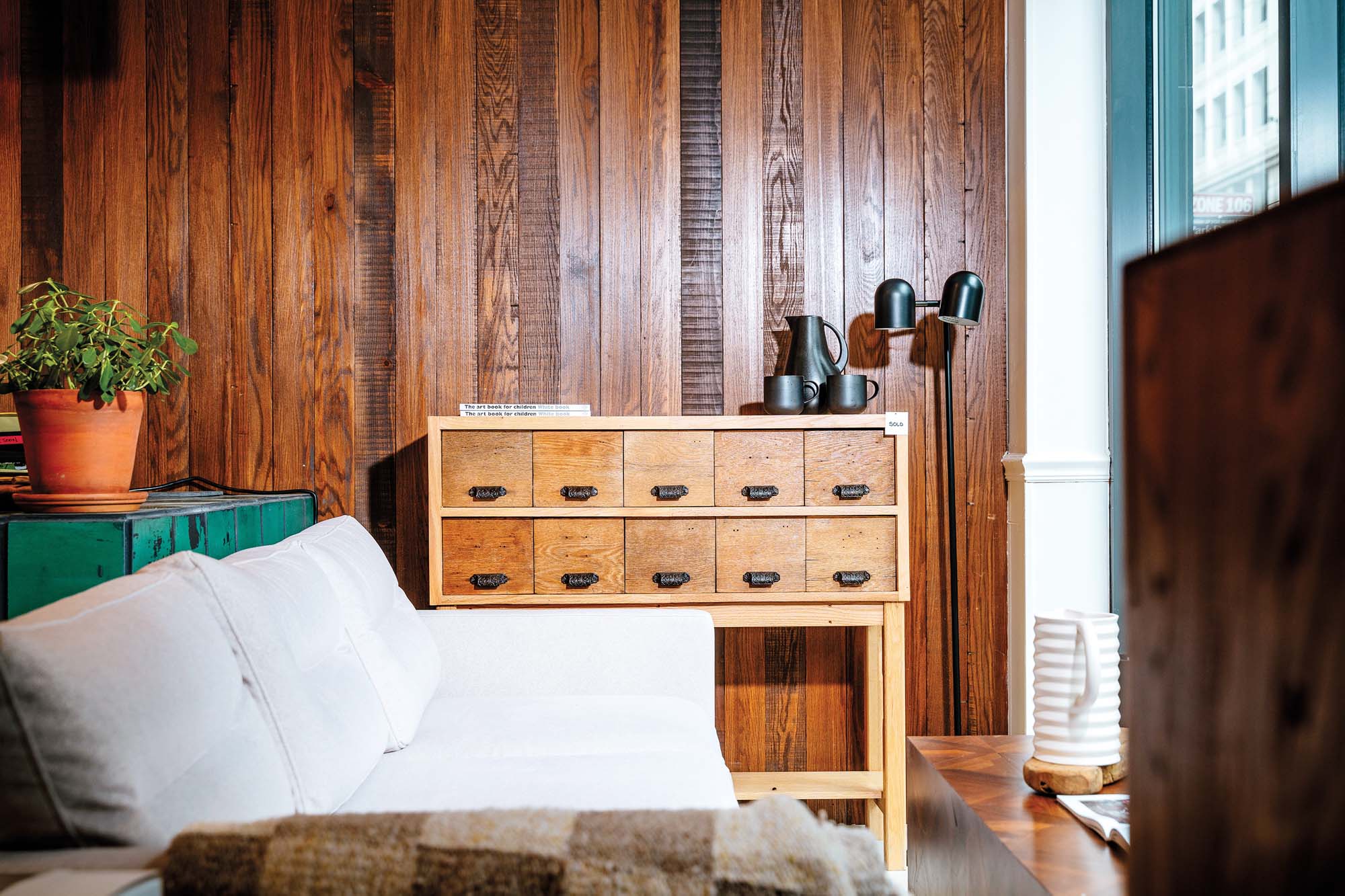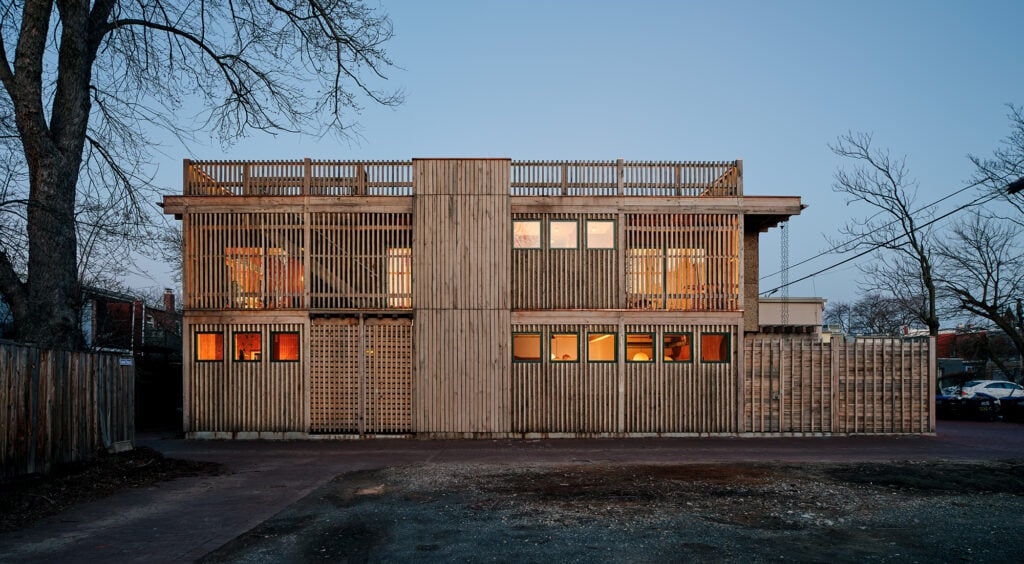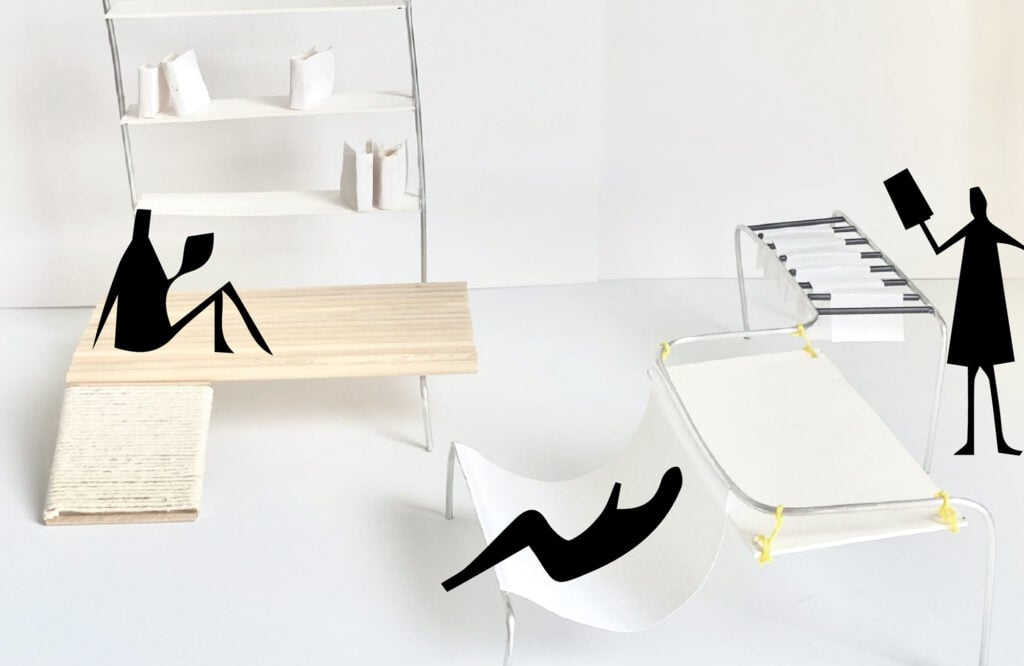
August 25, 2023
Woodward Throwbacks Transforms Landfill-Bound Goods into Modern Furniture

Though Detroit has many abandoned houses, the company acquires most of its material from commercial sources. “We always want to set the record straight that we’re never just going into houses and getting materials,” says Shepherd, who used to design automotive interiors for General Motors. “We’re a really big part of the community, and we’re known as the people to call when materials are coming out of a home, or a building is getting renovated.”

In recent years, the company has diversified its products and services, incorporating interior design and collaborating with retailers such as Target and Nordstrom. The couple bought, renovated, and sold an old house that was originally intended to be a potential material salvage project. And a little while back they bought a warehouse that will become their new home.
Despite the company’s success, Shepherd says it’s hard work: “There’s sourcing the material, deconstructing material, then processing the material, then creating. There are so many layers, but it’s a labor of love.”
Would you like to comment on this article? Send your thoughts to: [email protected]
- No tags selected
Related
Profiles
BLDUS Brings a ‘Farm-to-Shelter’ Approach to American Design
The Washington D.C.–based firm BLDUS is imagining a new American vernacular through natural materials and thoughtful placemaking.
Profiles
These Architecture Students Explore the Healing Power of Water
Design projects centered on water promote wellness, celebrate infrastructure, and reconnect communities with their environment.
Profiles
Future100: Lené Fourie Creates Adaptable Interiors
The University of Houston undergraduate student is inspired by modular design that empowers users to shape their own environments.





